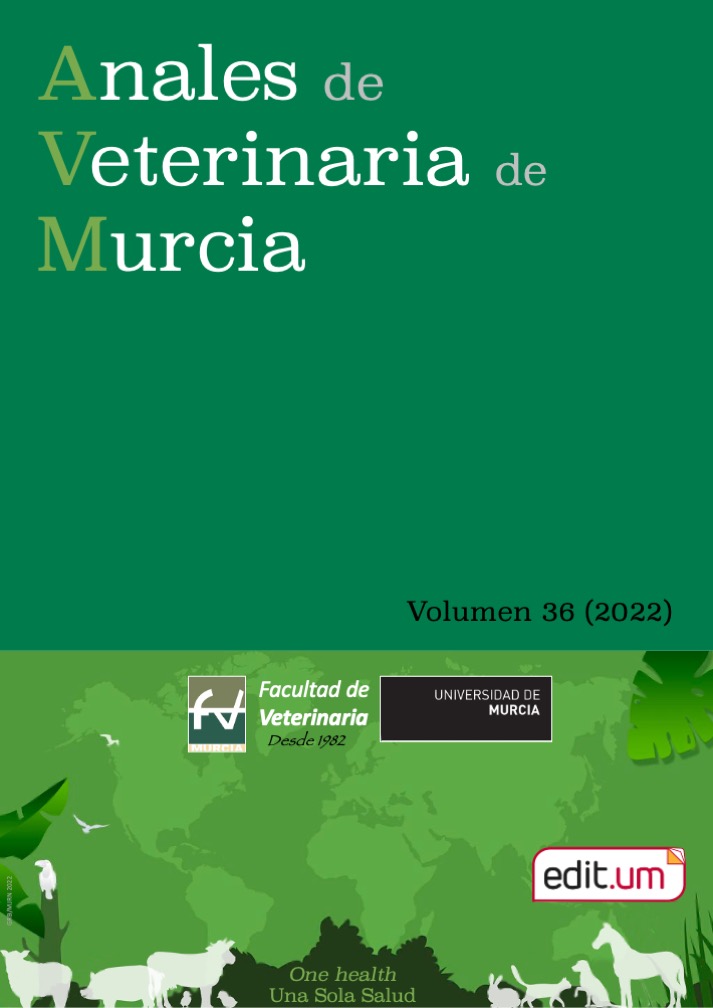MICROLEARNING AS A DIDACTIC TOOL IN THE SUBJECT MICROBIOLOGY I IN THE VETERINARY DEGREE
Abstract
Microlearning has been used as a teaching tool in an innovation project carried out with students of the subject Microbiology I in the Veterinary Medicine Degree at the University of Murcia. The students, guided by their teacher, elaborated training pills (2-5 minutes long videos) of the practical sessions of the subject. The training pills, once reviewed and corrected, were published in a private account of a famous social network (Instagram). Subsequently, the training pills went through a selection process by the students and the teacher. The best formative pill of each practical session was published in the Multimedia Gallery tool of the subject at Virtual Classroom, generating a didactic resource developed entirely by the student and for the students of this subject. Participation of 95% of the students was achieved, 65% of them prepared one or more training pills. The innovation project received a very good response from the students, motivated them in their learning process and encouraged their attention in the practical sessions. In addition, audio-visual resources were generated for practical teaching in subsequent courses.
Downloads
References
Aguiar, B.O, Velázquez. R.M., Aguiar, J.L. (2019). Innovación docente y empleo de las TIC en la Educación Superior. Revista Espacios, 40 (2): 8.
Belanche, D., Lozano, N., Pérez-Rueda. A. (2019). Instagram como herramienta de aprendizaje en el aula universitaria. En IN-RED 2019. Congreso de Innovación Educativa y Docencia en Red. Editorial Universitat Politècnica de València. 198-210. http://dx.doi.org/10.4995/INRED2019.2019.10371.
De Gagne, J.C., Park, H.K., Hall, K., Woodward, A., Yamane, S., Kim, S.S. (2019). Microlearning in Health Professions Education: Scoping Review
JMIR Medical Education, 5(2): e13997. https://doi: 10.2196/13997.
IBA. Estudios RRSS (2019). Estudio Anual de Redes Sociales. Recuperado de: https://iabspain.es/estudio/estudio-anual-de-redes-sociales-2019/
Moragrega, I., Ballestín, R., Mesa-Gresa, P. (2021). El uso de las redes sociales en la docencia universitaria: estudio piloto con Instagram. En: Satorre Cuerda, Rosana (ed.). Nuevos retos educativos en la enseñanza superior frente al desafío COVID-19. Barcelona: Octaedro. ISBN 978-84-19023-19-3: 229-242.
Portilla, G. (2017). Concepción teórico-metodolológica para el empleo innovador de tecnologías educativas emergentes (TEE) en la asignatura Sociedad y Cultura de la Nivelación de la Universidad Nacional de Educación (UNAE) (Tesis Doctoral) Azogues, Cañar, Ecuador.
Prieto Andreu, J.M. (2020). Una revisión sistemática sobre gamificación, motivación y aprendizaje en universitarios. Ediciones Universidad de Salamanca, 32: 73-99.
Salinas, J., y Marín, V.I. (2014). Pasado, presente y futuro del microlearning como estrategia para el desarrollo profesional. Campus Virtuales, 3 (2): 46-61.
Santoveña, S. y Bernal, C. (2019). Explorando la influencia del docente: participación social en Twitter y percepción académica. Comunicar, 27(58): 75-84. https://doi.org/10.3916/C58-2019-07.
UMU. Unidad de Innovación. Universidad de Murcia. Recuperado de: https://www.um.es/web/innovacion/
Zimba, O., Radchenco, O., y Strilchuk, L. (2020). Social media for research education and practice in rheumatology. Rheumatology Internacional, 40(20): 183-190. https://doi.org/10.1007/s00296-019-04493-4.
Copyright (c) 2022 Servicio de Publicaciones, University of Murcia (Spain)

This work is licensed under a Creative Commons Attribution-NonCommercial-NoDerivatives 4.0 International License.
Creative Commons Attribution 4.0
The works published in this journal are subject to the following terms:
1. The Publications Service of the University of Murcia (the publisher) retains the property rights (copyright) of published works, and encourages and enables the reuse of the same under the license specified in paragraph 2.
© Servicio de Publicaciones, Universidad de Murcia, 2019
2. The works are published in the online edition of the journal under a Creative Commons Attribution-NonCommercial 4.0 (legal text). You can copy, use, distribute, transmit and publicly display, provided that: i) you cite the author and the original source of publication (journal, editorial and URL of the work), ii) are not used for commercial purposes, iii ) mentions the existence and specifications of this license.

This work is licensed under a Creative Commons Attribution-NonCommercial-NoDerivatives 4.0 International License.
3. Conditions of self-archiving. Is allowed and encouraged the authors to disseminate electronically pre-print versions (version before being evaluated and sent to the journal) and / or post-print (version reviewed and accepted for publication) of their works before publication, as it encourages its earliest circulation and diffusion and thus a possible increase in its citation and scope between the academic community. RoMEO Color: Green.




